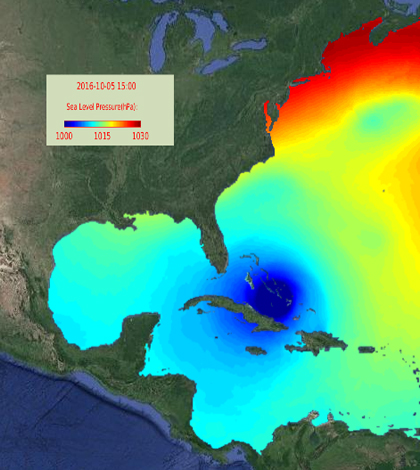Ocean Weather Model Provides Atlantic Forecasts

Screenshot of the Coupled Northwest Atlantic Prediction System (CNAPS). (Credit: North Carolina State University)
A weather forecast is something most of us take for granted. For some time, we’ve been able to access quick forecasts on TV, radio and smartphones. But similar convenience has until recently been unavailable to fishermen working in the Atlantic Ocean.
Thanks to a new, real-time modeling system, fishermen, offshore workers and even general boaters now have access to instant ocean weather forecasts. The system is called the Coupled Northwest Atlantic Prediction System (CNAPS) and provides users with 72-hour forecasts.
The ocean weather modeling system incorporates circulation, wave and atmospheric data from weather stations, satellites and buoys in the Atlantic. These cover a large portion of the ocean, from the eastern edge of Nova Scotia to the north coast of Venezuela, including the Gulf of Maine, Middle Atlantic Bight, South Atlantic Bight, Gulf of Mexico, Caribbean Sea and western Sargasso Sea.
Data on Atlantic Ocean weather are helpful for fishermen because they can know where currents and temperatures may be best for finding fish. U.S. Coast Guard personnel can use its current and wave forecasts during search and rescue missions. And oil and gas workers can use CNAPS to know when dangerous ocean eddies may be developing.
Access to the ocean weather prediction system is available online. By clicking on different tabs on the CNAPS website, users can look at weather dynamics including wind speed, air temperature and sea-level air pressure. They can also track wave height and direction, ocean circulation, water temperature, salinity and currents at different depths.
Scientists at North Carolina State University led development of the forecasting tool.
Top image: Screenshot of the Coupled Northwest Atlantic Prediction System (CNAPS). (Credit: North Carolina State University)




0 comments